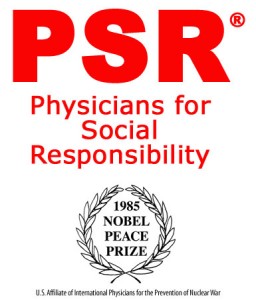air toxics
D-I-V-O-R-C-E….Is the Frisco-Exide Settlement On the Rocks?
 After a brief honeymoon, is it Splitsville for the 2012 clean-up agreement between Exide and the City of Frisco? And if their shotgun marriage is breaking apart, what are the implications for Frisco residents and the surrounding area, including Lake Lewisville, a source of drinking water for Dallas that sits directly downstream of what now may become a Superfund site?
After a brief honeymoon, is it Splitsville for the 2012 clean-up agreement between Exide and the City of Frisco? And if their shotgun marriage is breaking apart, what are the implications for Frisco residents and the surrounding area, including Lake Lewisville, a source of drinking water for Dallas that sits directly downstream of what now may become a Superfund site?
On February 25th, Channel 11 broke the story that, after almost two years of assuming the settlement would guide clean-up efforts, the City of Frisco doesn't "know if the company will stick with the deal or walk away from it until the company files a reorganization plan by the end of May."
That's a big deal. Having declared bankruptcy last year, Exide is now dealing with thousands of creditors with competing claims. Frisco is only one of them, and only one of a half dozen closed or operating lead smelter sites that are also suffering from contamination. If the City's deal with the company can't survive the bankruptcy process, all the current planning for clean-up and redevelopment of the outer ring of Exide will be derailed. And that's important because the settlement has been the Frisco City Council's justification for not opening up the fate of the property to more public discussion, like whether residents would prefer building a toxic landfill and keeping Exide's waste in town, or cleaning up the entire sire and hauling off all contamination to allow for normal development.
It's also important because without the city's deal in place, and Exide in bankruptcy court, there is no Plan B to prevent the entire site from becoming an EPA federal Superfund site, exactly the same way the still languishing RSR lead smelter site in West Dallas ended up as as Superfund site in the early 1990's after that company went belly up. It's a designation that Frisco officials are known to dread.
There have been signs of trouble with the agreement for months now. According to documents filed by the City of Frisco in federal bankruptcy court last December, Exide is in default on its agreement with the City, and risks further claims of breaches, as well as “fraud in the negotiation, execution, and performance” of the settlement.
The historic 2012 settlement arranged for a swap of 179 acres of Exide-owned land in Frisco in return for $45 million from the Frisco Economic Development Corporation and the Frisco Community Development Corporation. Passed unanimously by the Frisco City Council with only a week’s public notice and no public hearings, the agreement closed the smelter earlier than expected but is based on an elaborate series of conditions and clean-up standards.
It’s at least one of those conditions, the required demolition of “all above-ground structures” in a section of the smelter site the city is purchasing called the “Bowtie Parcel,” which appears to be the center of the default claim by Frisco. Specifically, it’s the continued presence of a specialized building involved in the treatment of the smelter’s wastewater known as “The Crystallizer,” that prompted the legal tension.
Last August, Mack Borchardt, the City’s Special Assistant in charge of monitoring the Exide clean-up, wrote a letter to the company disputing the Agreement’s demolition provision had been fulfilled as long as the Crystallizer remained standing:
“Frisco disagrees with your assessment that the demolition activities on the Bowtie Property have been completed and demand that you retract Exide’s notice immediately. For example, the Master Settlement Agreement requires (A)ll above ground facilities on the Bowtie Parcel…” to be removed from the Bowtie Parcel as part of Demolition Activities.” The above ground facilities include the Crystallizer which has not been removed and it has not been approved in writing by Frisco to remain standing. If you fail to immediately withdraw Exide’s notice, Frisco reserves the right to pursue all available remedies.”
By December 9th, when a Bankruptcy Court deadline required the City to file its claims against Exide, Frisco City Hall was adamant that “Exide has not demolished and removed all above ground facilities…. As a result, Exide is in default on its performance obligations under the Master Settlement Agreement.” But along with that outstanding claim, City lawyers also added a new list of possible Exide violations, both civil and criminal:
“Finally, Frisco may also have additional contract and/or tort based claims against Exide, including,without limitation, breaches of the Master Settlement Agreement, nuisance, quantum meruit, money had and received, breach of fiduciary duty, negligence and gross negligence, conspiracy, and claims based on fraud and fraud in the inducement and/or negligent misrepresentations relating to the negotiation, execution, and performance of the Master Settlement Agreement.”
If the deal between Frisco and Exide comes apart, there’s nothing to guarantee that any of the smelter property gets cleaned-up or redeveloped the way the City’s been promising.
Although the entire Exide smelter site and surrounding property is full of toxic hot spots, the facility at the center of the latest legal dispute, “the Crystallizer,” has been a source of particular regulatory concern. As part of the final processing of contaminated waste water at the smelter, it condensed filtered liquids into sodium sulfate solids.
In a December 2009 report, EPA inspectors at Exide observed, “Uncontrolled salt laden runoff from the Crystallizer plant was observed as salt deposition on the concrete aprons around this process area at the plant. The ‘frac’ tank used for holding purge water from the crystallizer plant was leaking at the time of viewing.” This crystallized substance tested high for toxic metals content and testing of the contents of the frac tank showed toxic levels of selenium and cadmium.
In September 2010 inspectors again found “uncontrolled salt laden runoff from the Crystallizer plant and also that the frac tank was leaking.”
In July of last year the Texas Commission on Environmental Quality reported that “the levels of sulfate in soils surrounding the Crystallizer unit are much higher than in other areas” and “drums of PCBs were noted in the Crystallizer area.” PCBs, or Polychlorinated biphenyls, were once widely used as cooling fluids, but have been banned in the US since 1979 because of their persistent toxicity.
Because of its use of chlorine in treatment of waste, the Crystallizer could also be one of the major reasons Exide became one of Texas’ largest Dioxin polluters. In 2009, the Frisco facility was ranked as the 9th largest source for Dioxin pollution in Texas, surpassing all other North Texas facilities, including the Midlothian cement plants. Dioxin is one of the most potent toxins ever tested by EPA, and is measured in grams, not pounds.
Despite this history, no testing for Dioxin contamination has ever taken place at the former Exide smelter site by any regulatory agency, and that’s a point of contention for critics of the smelter clean-up.
Exide’s choice to risk an agreement that could give it $45 million in much-needed cash over the demolition of one remaining structure is curious. And it’s one that poses a challenge to the entire future the City of Frisco has laid out for the smelter site. If the City doesn’t buy the 179 acres of Exide property surrounding the smelter, it’s fate will be tied to the company’s and it might either become part of a future Superfund site or languish in a kind of real estate purgatory for a very long time.
That would more than double the size of the economic black hole the core plant site already poses for central Frisco. Frisco City Hall has come out in favor of locating a permanent toxic dump for Exide waste on that core property, but residents who are members of the local group Frisco Unleaded says there’s no reason to believe an Exide landfill would be run any better than an Exide smelter.
There's already been documentation of extensive lead contamination up and down Stewart Creek from the Exide property, through Grand Park and all the way to Lake Lewisville. Although the City of Dallas Water Utilities Department says that's not a threat to the city's drinking water because of its treatment facilities, the presence of a large landfill and/or Superfund site poses a danger of catastrophic releases that an operating smelter doesn't. And of course, recreational users of the Lake are being routinely exposed.
On February 26th, the Dallas Morning News identified competing plans for the clean-up of Stewart Creek as another source of tension between Frisco and Exide.
The only good news from this great unraveling is that it provides a chance to restart the public debate about what to do with the Exide site – a debate that was short-circuited by the council's settlement agreement that made everything seem like a done deal, even though its obvious now there were a lot of unanswered questions. There continues to be a need for a bottom-up, community wide discussion of what Frisco residents want to see happen with the site. Events in May might make that a more pressing priority.
Testimony From Magnablend Explosion Trial: “Heavy Metal Lids Flapping Up and Down”
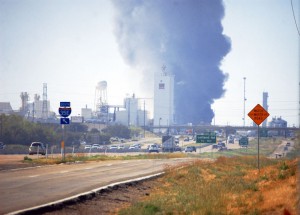 Do you remember the Magnablend explosion in Waxahachie in October of 2011? It quickly enveloped the entire facility and created clouds of black smoke that wafted all the way to Dallas. Run-off from the water used to control the fire killed hundreds, if not thousands, of fish in a near-by creek.
Do you remember the Magnablend explosion in Waxahachie in October of 2011? It quickly enveloped the entire facility and created clouds of black smoke that wafted all the way to Dallas. Run-off from the water used to control the fire killed hundreds, if not thousands, of fish in a near-by creek.
Magnablend was not a chemical manufacturer. It mixed chemicals already made into new combinations for different industries, including the oil and gas industry, pool companies, etc. It did this not all that far from central Waxahachie.
This last week saw testimony about the conditions leading up to the fire in a trial where Magnablend (now called Lifoam Industries) employee James Barron alleges he suffered injuries from inhalation, including brain damage, headaches, balance problems and shortness of breath. His doctor diagnosed him with encephalopathy and high cortical dysfunction caused by exposure to carbon monoxide fumes in the fire.
Following his doctor's diagnosis, Barron's attorney cross-examined Brent Asbill, a supervisor on duty the day of the fire, and asked him to describe the situation that lead to the explosion and fire.
"Asbill said on the day of the accident there was a new chemical tank to blend the product in that had no cooling jacket, thermometer of adequate suppression. Asbill said he was able to get a thermometer installed on the tank by maintenance personnel but the other concerns he reported to his supervisor. His supervisor then made a call to another boss to explain Asbill’s concerns, but Asbill was told to proceed with blending the product. Cole asked if Magnablend had required him to read any of the material safety data sheets that were on file. Asbill said no."Cole then asked Asbill to describe come of the conditions, once he knew something in the blending process appeared to be wrong. Asbill said the heavy metal lid on top of the tank was flapping up and down which indicated that tank had pressure. The vapor produced from the chemical reaction made it appear as if it was raining inside the building. Also electrical equipment started to arc and short out."
Despite these conditions, and evacuation still wasn't ordered until after the explosion. Testimony by other employees and contractors indicate that there was only a single fan providing any kind of ventilation for the blending operation.
Testimony from the trial shines a harsh light on two or three realities in the chemical business. First, it's employees who are often on the front line of health effects from these kinds of facilities, whether through routine exposure of chemicals or catastrophic accidents. But Magnablend had no union looking out for employees, and you'd be hard-pressed to find any union representation in the chemical industry outside the traditionally-union friendly Gulf Coast. Could such an accident have happened in a union shop? Sure. But it's less likely because more boxes have to be checked and there are more rules designed to protect the employees.
Second, the rules and regulations on paper governing an industry don't always mean much in the day-to-day operation of a facility like this – not huge enough to warrant official concern from EPA or OSHA most of the time, but large enough to cause a huge ecological and public health threat if something goes wrong. Industry can't be "over-regulated" if current regulations are not being enforced.
Finally, despite assurances, things can and do go wrong in the field. Whether it's on a fracking rig, a chemical plant, or a cement kiln, human beings find it difficult to be perfect 100% of the time and when you're dealing with unforgiving processes or technology that leave little room for error, things will sometimes go horribly wrong.
That's not an argument to ban such industrial activity, but it's a compelling argument to locate these kinds of facilities away from people.
Can a Council Whose Majority Voted for the Trinity East Permits Now be Expected to Defend the City’s Denial?
 As you might have heard by now, forlorn natural gas operator Trinity East has sued the City of Dallas for denying the three permits it was seeking to drill along the Trinity River in Northwest Dallas by the Irving border. Claiming breach of contract and even fraud, the company is saying it's owed millions of dollars above and beyond the $19 million it spent on leases for the three sites.
As you might have heard by now, forlorn natural gas operator Trinity East has sued the City of Dallas for denying the three permits it was seeking to drill along the Trinity River in Northwest Dallas by the Irving border. Claiming breach of contract and even fraud, the company is saying it's owed millions of dollars above and beyond the $19 million it spent on leases for the three sites.
Anyone who's seen the filing knows this is a lawsuit with no legs. Yes, Trinity East leased the land, but guarantees about permits being awarded were not part of the deal. Those can't be bought so blatantly. Even Mary Suhm's secret memo un-earthed last February by the Dallas Observer made it clear that her assistance was not a guarantee and "not a legally binding agreement." The leases were one thing. The permits another. Trinity East thought it had the permits in hand when Suhm signed her memo. So did Suhm.
That's why citizens were told in 2012 that Trinity East permits were a "done deal" by sources in City Hall, including Mayor Rawlings, who seems to have known about the Suhm memo before the public did. There was just no way those permits were going to be denied. Suhm and the Mayor were not going to let that happen. That's why they called for the hearing and permit vote two days before Christmas. They thought no one would show and they could wrap it up. So it was a big surprise when the City Plan Commission voted to deny the TE permits. Undeterred, there was suddenly a call for an unprecedented, second "reconsideration vote" by the Plan Commission by the Mayor's representative on the same permits. But Trinity East lost that fight too, by a wider margin, in January of 2013. This time without any public hearing.
When the CPC denial came to the City Council in August of 2013, charter rules demanded it must be overridden by a super majority of 12. The vote to overturn the CPC's denial was 9 to 6, leaving the denial in place, but showing a majority of the current council in favor of granting the permits.
Then the strategy turned to adapting the new drilling ordinance to fit the Trinity East permits. If they couldn't make it through the front door, they could go in the back way. And so City legal staff tried to manipulate the City Plan Commission into carving out exceptions in the new draft ordinance that would allow that. Instead of a 1500-foot setback, they urged 1000 feet with a variance back to 500 feet. That would allow all Trinity East sites. Then they tried to ease the rules on park drilling, and even succeeded to some extent, softening a ban on surface drilling in parks that was part of the old ordinance.
Only Dallas residents working overtime and applying more scrutiny saved the day and got Plan Commission support for a new ordinance that did finally shut the door on all three Trinity East permits. And of course, that's when Trinity East, aided by the entire gas industry, decided to sue.
So you now have the weird situation where the same City Hall that was trying so desperately to win those permits for Trinity East is now being sued by the company for not being conspiratorial enough to subvert the public process. Yesterday, the city issued an statement saying the company's lawsuit lacked merit and, "The city will vigorously defend its right to exercise its regulatory powers to protect public health and safety as well as the environment."
But here's the thing. Since a clear majority of current Dallas City Council members voted for the permits, how much will power is there among this same group to now defend a position they didn't take? And since it was often the Dallas City Attorney's office leading the charge to manipulate the system on Trinity East's behalf, how well do you trust that same crew to "vigorously defend" the outcome they tried so hard to prevent?
Three are some legal principles involving the city's right to control its own zoning decisions which could motivate the city and/or the Texas Municipal League into such a defense. But you have to wonder how much heart they really have for a fight, of which right up until the last vote, they were on the same side as the company now suing them.
To make sure the City doesn't settle with Trinity East, citizens are going to have to persuade the three council members who voted with them for the new ordinance, but against them on the Trinity East permits to change their minds – Jennifer Staubach-Gates, Dwaine Carrawy and Mayor Ralwings.
That won't be easy. Rawlings was making the "I told you so" rounds in the media yesterday. The first sign that they might be serious about defending themselves is whether they'll hire an outside law firm with municipal law experience to represent them. If they put the same people in the City Attorney's office who were working in concert with Trinity to win those permits in charge of this fight, we're doomed. If they hire a competent firm with a reputation for toughness, you'll know they think there might be some points of law worth going to court for.
Longer term, it once again puts a spotlight n the need to elect additional allies of the six council members who've been reliable allies to citizens on this issue. This coming Dallas municipal election cycle in 2015 will see almost half the council seats up for grabs as incumbents are term-limited out. Stay tuned.
End of an Era: TXI Cement Sold To Martin-Marietta
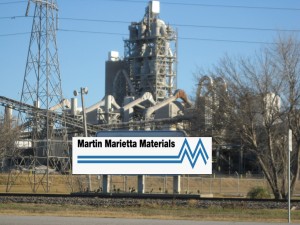 In a $2 billion deal, Raleigh, North Carolina-based aggregate and crushed stone manufacturer Martin Marietta Materials (a separate spin-off on the more well-know aerospace conglomerate) bought Dallas' own TXI Cement, which opened its first cement kiln in Midlothian in 1960.
In a $2 billion deal, Raleigh, North Carolina-based aggregate and crushed stone manufacturer Martin Marietta Materials (a separate spin-off on the more well-know aerospace conglomerate) bought Dallas' own TXI Cement, which opened its first cement kiln in Midlothian in 1960.
This year, that kiln, along with the three other obsolete wet kilns at TXI's Midltohian plant that burned hazardous waste for two decades, is due to be demolished, following the company's corporate demise at the hands of the grandson of its founder. And then, the last remnants of the old TXI will be gone for good.
What does the change in ownership mean for breathers in North Texas?
Martin Marietta has owned and operated cement plants around the US in the past, but they'd divested themselves of these prior to 2014. As of now, the TXI cement plants in Texas and California are apparently the only ones the company owns. There's some speculation that Martin-Marietta bought TXI for its aggregate, stone, and concrete facilities in Texas and California, and will soon seek a buyer for the cement plants it inherited, but doesn't really want.
If that's true, the new owners will act as placeholders of the status quo, not investing in big new capital projects, but also trying not to lose any of the value of the assets they now have by running them into the ground. Martin probably won't look favorably upon attempts to bring smog-reducing modern Selective Catalytic Reduction (SCR) technology to TXI via the next clean air plant for DFW, now due in June of 2015. Not only would the plant be among the first to adopt the technology in the US, (even though SCR has been successfully used in European cement kilns for over a decade now), but it would mean new capital investment and a new learning curve.
Swiss-based Holcim Cement, with a huge plant already in Midlothian and a large manufacturing footprint in the US, was rumored to be one of TXI's suitors before the sale was announced. It could be that Holcim, or another well-established player in the cement industry winds up with the actual kilns in the next year. That could complicate the plant's participation in the new clean air in other ways even if new owners are not as intimidated by the demand for new technology
Politically, it'll be interesting to see which Austin lawyers and lobbyists get the business of the new company. Martin-Marietta owns over 40 facilities in Texas already and is represented by it's own crew. Will TXI's law firm and lobbyists survive the buy-out? There are industry lobbyists that will keep the ball rolling no matter what – the Chemical Council, the Aggregate Association, etc. But in Austin, it's all about relationships, and it's hard to say yet how this Martin's buying of TXI changes any of them.
Maybe the place TXI's absence will be felt the most in in the corridors of power in DFW. TXI was proudly headquartered in Dallas. Ralph Rogers, TXI's founder and patriarch was a driving force in local philanthropy, giving millions to public broadcasting (KERA is housed is housed in the "Ralph Rogers Communications Center") and other non-profits. Besides feeing like he was entitled to use PBS's iconic Big Bird to sell the benefits of burning hazardous waste in 50-year-old cement kilns, the non-profit giving Rogers was responsible for made him a known figure on the Dallas Charitable circuit. In turn, this made it hard for the Powers That Be to criticize Roger's company when it became a waste incinerator.
Locally, the establishment played golf with the Rogers' or attended black tie dinners with them, or helped them lift the oversized scissors at ribbon-cutting ceremonies. But that was old Dallas. Hardly of those relationships survived past Ralph Rogers' death in 1997. His son, Robert, failed to maintain that same high-profile locally, and his grandson Jamie seems totally disinterested in the family business or its legacy of charitable giving.
Now, the move of company headquarters from Dallas to Raleigh will complete the disappearance of the once-mighty TXI on the local scene. They'll still be company representatives at functions, but it won't be the guy who can write the big checks, or who the Mayor had a splendid time with last Saturday at the Club.
The company's local political influence has forever been diminished, and that's a good thing for citizens who are fighting the company to get modern controls like SCR. Now, it's just one more corporate entity with a presence in North Texas. A presence that makes it the single largest air polluter in the region. That's the way Dallas and other downwind cities should have viewed the company all along.
“We don’t really know, 8,000 feet below, where the waste goes”
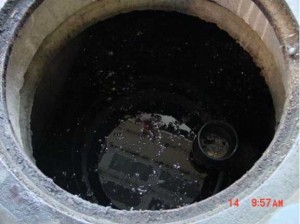 That's Texas Supreme Court Justice Paul Green blurting out an unfortunate truth even as he was trying to defend an injection well that's being sued for trespassing into groundwater under an adjacent rice farm in Liberty County near the Texas gulf coast.
That's Texas Supreme Court Justice Paul Green blurting out an unfortunate truth even as he was trying to defend an injection well that's being sued for trespassing into groundwater under an adjacent rice farm in Liberty County near the Texas gulf coast.
The Texas Tribune's Jim Malewitz has the scoop on a so far mostly over-loooked case that could set some important precedents about land rights and underground contamination. How do we know? Because the oil and gas industry told Maelwitz:
In 1997, Environmental Processing Services finished drilling an injection well about 400 feet from FPL Farming’s land, which the farm contested early on. Since then, the company has injected more than 100 million gallons of wastewater, gradually expanding the well's underground footprint.
The well in question is labeled Class I and used for nonhazardous industrial waste. It is not one of the 50,000 Class II wells that drillers typically use. But lower-court opinions have drawn no distinction between the wells. That has stirred concerns among oil and gas producers that a ruling in the farm’s favor would complicate efforts to dispose of drilling waste, thereby stalling production.
“Because the ability to produce oil and gas is inextricably tied to the availability of injection wells,” the Texas Oil and Gas Association says in a brief, “a new common law cause of action that threatens operation of injection wells likely threatens oil and gas production."
As Malewitz points out, the case raises the questions of "just how far below the earth’s surface do property lines extend? And can someone trespass on another’s property — more than a mile underground?"
Since it's close to the coast, the farm's groundwater is too salty to drink now but the farm's lawyers argue that desalinization technology could render the water useful. They say regardless of its salinity, it's a resource and a piece of private property that's being poisoned by the well's waste stream that includes the flammable liquid acetone.
Now you may think the waste well operators, "Environmental Processing Services," would deny any contamination of the farm's water as a first line of defense. But as it turns out everyone in industry and the regulatory agencies believes that after you've pumped 100 million gallons of industrial waste down a hole 800 feet deep, it will tend to "migrate" outside the fence line of the well itself. So what kind of arguments are EPS's lawyers that the Texas Supreme Court is finding so persuasive?
1) Our waste may be migrating, but since we can't go down there and check, you really can't conclusively prove that it's under the farm…yet. All you have is an industry-government model that everybody uses that says it has.
2) The water is already polluted with too much salt, so there's no way you can pollute already polluted water. So there.
3) Even if it is polluted by our waste, maybe that same desalinization technology the farm wants to use to make the water useable will also be able to filter our industrial waste out if it.
Of course, these equivocating arguments in court by lawyers are a far, far cry from the air-tight assurances Texans get from the industry spokespeople or slavishly pro-industry elected officials, who GUAR-AN-TEE that no fracking waste injection well could ever contaminate groundwater.
Really. You should go read the article. The lawyers are making lots of money on this one. No timeline for a ruling.
Physicians for Social Responsibility Talk This Thursday Night
DFW has a lot of things, but one thing we do not have is a group of medical professionals who speak out for environmental health when it's threatened by pollution or other human-made disasters. Nationally, the group Physicians for Social Responsibility (PRS) has filled this role for over 50 years now. Founded in 1961 to make the medical case against a "winnable" nuclear war, the organization has morphed into a strong voice for clean air and water from a public health point of view.
Despite being a national center of medical research and care, DFW doesn't have a local chapter of PSR. But this Thursday, Chris Masey, the Austin-based Texas Director of the group will be in Dallas to talk about their connection to current energy and environmental fights, including the one against aging East Texas coal plants that were the subject of a Dallas County Medical Society petition to the Texas Commission on Environmental Quality.
His visit is sponsored by Dallas Interfaith Power and Light. Its scheduled for this Thursday beginning at 7 at the White Rock Methodist Church on Oldgate Lane. Here's what their blurb says about the talk:
Chris will speak about air quality as a crucial key to human health including fossil fuels background and information, specific toxic emissions, air as a carcinogen, climate disruption, and the shifting patterns of infectious diseases. Chris’s lecture will also include information about Texas PSR, and ongoing advocacy efforts to phase out and close coal-fired power plants and to advocate for stricter carbon emission standards.
More about our speakers: Chris Masey, MBA, is a eighteen-year environmental professional who has worked on a diverse set of projects throughout Texas focusing on public health, conservation, land stewardship, alternative energy sources, recycling, and environmental and solid waste planning. During the last two years, Chris has proudly helped guide Texas PSR (formerly Austin PSR) to become the largest environmental advocacy group led by healthcare professionals in Texas! Chris’ dedication to environmental sustainability is grounded in his love of Texas and the desire for his family to continue to enjoy clean air, clear water, and wide-open spaces.
If you're a medical professional who's interested in helping out citizens in need, or you know someone who fits thst description, please consider attending this Thursday's meeting. There's really no excuse for a metropolitan area the size of DFW not to have a cadre of concerned doctors and nurses who can speak put against fracking close to homes or burning plastic in cement kilns, or just confirm for some of our more aggressively ignorant elected officials that indeed, smog and lead are bad for people. With any luck, perhaps Chris Masey's appearance here this week can begin a conversation that leads to such an effort. It is way overdue. See you there.
Follow-Up Study Confirms Lower Birth Weight Babies Around Fracking Sites
 A 2012 study by a Cornell graduate student Elaine Hill that found a 25% increase in low-birth weight babies within 1.5 miles (7920 feet) of a gas fracking sites in Pennsylvania got a boost from a follow-up study previewed over this last weekend at a conference in Philadelphia.
A 2012 study by a Cornell graduate student Elaine Hill that found a 25% increase in low-birth weight babies within 1.5 miles (7920 feet) of a gas fracking sites in Pennsylvania got a boost from a follow-up study previewed over this last weekend at a conference in Philadelphia.
Janet Currie of Princeton University, Katherine Meckel of Columbia University, and John Deutch and Michael Greenstone of the Massachusetts Institute of Technology also looked at Pennsylvania birth records and found the risk of low-weight births increased by 50% within 2. 5 kilometers (8125 feet) of a fracking site. That's over 7 times the distance of the recent 1500 foot buffer zone between homes and drilling pads passed by the City of Dallas last month.
This rate was constant for both households with their own water wells and municipal water system users, seemingly ruling out water contamination as a cause. Air, noise and light pollution are now the suspected culprits.
This second study was specifically designed to address critics of Hill's previous work:
"….they built on the work of Elaine Hill, a PhD student at Cornell University who sparked controversy in 2012 with a study showing that infants born near fracked gas wells had more health problems than infants born near sites that had merely been permitted for fracking. One criticism of Hill's study was that fracking activity might change the demography of an area, attracting more mothers who are likely to give birth to infants with health problem.
The new research addresses such concerns by following a constant group of mothers who had children both before and after the onset of fracking, and by controlling for geographical differences in mothers' initial health characteristics. It seeks to achieve the rigor of a controlled experiment by focusing on mothers who, due to their locations and the dates of their pregnancies, were effectively selected at random to be exposed to fracking.
The study is expected to be accepted for publication sometime this Spring after being peer-reviewed.
Coming to A Cement Plant Near You? Burning Fracking Fluid
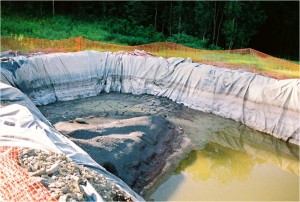 A Canadian LaFarge Cement plant wants to start using fracking fluid to replace fresh water it uses in its manufacturing process.
A Canadian LaFarge Cement plant wants to start using fracking fluid to replace fresh water it uses in its manufacturing process.
The company's Brookfield plant in Nova Scotia is an ancient "wet kiln" that uses approximately 35 million liters of water from a near-by lake to produce cement. Fracking fluid that has been run through a reverse osmosis filtering process would be used as a parital substitute for this fresh water.
According to the local newspaper account, a LaFarge PR spokesman is quoted as saying “It’s safe enough to drink. The contaminants have been removed and the recycled waste water exceeds government guidelines to be released in the environment.”
But funny thing. Despute that assurance of safety, when the company ran a full page ad announcing its plans to use waste water, it forgot to mention that it was waste fracking fluid. Maybe because there's a moratorium on fracking in the Province while a review of its safety and public health impacts are investigated.
Local municipal Council Member Doug MacInnes said he spoke to the LaFarge plant manager about the ad.“He explained to me that it was worded that way so that it wouldn’t get the public upset." According to the LaFarge manager, "I think there is a negative connotation with fracking."
So where is the waste fracking fluid coming from? From two local holding ponds that have been containing the leftovers of three wells way back in 2007 and 2008. About 14 million litres of fresh water was used. When this water was regurgitated by the wells it was poured into the ponds. Many observers believe that although this first step is only a pilot test, LaFarge wants to begin importing fracking fluid from Canada's large oil and gas plays.
When it was burning hazardous wastes in its own wet kilns in Midlothian from 1986 to 2008, TXI Cement also charged companies for disposing of their industrial waste waters, which often contained Volatile Organic Compounds (VOCs), heavy metals, chlorine and other contaminants. Back then, it was called "recycling" and was defended by TXI as a way to reduce fresh water use, and costs. TXI used the "Long, Hot and Good For America" argument it always used to defend the burning of waste – that the high temperatures of the kiln destroy all the bad stuff. Only that's not true. Metals don't burn. Chlorine doesn't burn. And Dioxin can actually be created when plastics are burned.
And there was another problem unique to the disposal of wastewater. The contaminants, especially the VOCs, were being lost to the atmosphere long before the water reached the plant's kilns with their 2500 degree temperatures – the rising heat stripped the pollutants out of the water and sent them up the stacks, causing an increase in pollution. For these reasons, EPA forced TXI to quit using industrial wastewater as a substitute for fresh water even before the wet kilns shut down permanently in 2008 and waste-burning was halted.
With fracking waste water, you get all these kinds of pollutants plus the added threat of radioactivity, of which there is no mention in any of the coverage about the LaFarge proposal. "Natural radioactive elements" as well as ones used in the drilling process have been known to contaminate fracking waste. Reverse osmosis won't be able to fix that.
We've written about idea of oil and gas fracking fluid flowing downhill to the cement plant industry – the least regulated option – for disposal, most recently when it came up in Saudi Arabia. Now it's jumped the pond and has landed in North America. How long do you think it'll be before you see a cement plant near or in a US shale play that will propose the same thing?
One of the practical concerns of citizens over the plans of the LaFarge plant is the effect corrosive fracking fluid that's full of salt has on an industrial process dependent until now on fresh water.
The local Colchester County Council. is planning to send a letter of concern to Lafarge, the minister of Environment, and the local Department of Environment office. Last summer, council rewrote its sewage use bylaw and rejected an application by a local firm to dispose of treated frack waste through the municipal sewer system because of potential dangers to the environment. That same firm is the one that says it will filter the fracking fluid before sending it to LaFarge.
What Would A TXI Sale Mean to DFW Air?
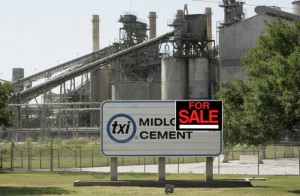 According to the Dallas Morning News, TXI Cement is up for sale with at least two possible buyers, Vulcan and Holcim, mentioned in last Friday's story. Along with kilns in California, the company's Midlothian and Hunter, Texas cement plants are on the block as part of the deal.
According to the Dallas Morning News, TXI Cement is up for sale with at least two possible buyers, Vulcan and Holcim, mentioned in last Friday's story. Along with kilns in California, the company's Midlothian and Hunter, Texas cement plants are on the block as part of the deal.
As the news reports note, the timing is a little strange in that the construction industry, the barometer for all things cement, is only now rebounding out of its Great Recession doldrums, and TXI's profits are nowhere near it's pre-collapse heights. It could be that the latest generation of the Rogers' family to run the firm isn't all that interested in keeping it running, or that the two largest and restless corporate shareholders, who now own 51% of the company, are anxious to deal.
Of the two suitors listed in the News article, Holcim is one of the industry's international giants that has the large cash reserves, while Vulcan is smaller, US-based, and considered more of an Aggregates business with some cement plants in Florida.
On the other hand, Holcim already operates a huge cement plant across the street from TXI in Midlothian. It's hard to imagine the company needing to double its manufacturing capacity in DFW. But perhaps TXI's California market share makes the deal look attractive as a whole and the Midlothian plant would be spun off to a third party. For Vulcan, it looks like a way to go from a regional powerhouse to a national one by buying plants in two large, influential state economies.
Holcim is a leader in the new waste-burning revival within the cement industry. Its Midlothian cement plant already has a permit to burn a long list of industrial wastes, although it's not as long as TXI's. During the economic downturn,TXI was given permission by Rick Perry's TCEQ (without public notice or participation) to burn a variety of new wastes like car "fluff" and plastics , but reportedly didn't have the capital to build the infrastructure needed to convey the wastes to the kilns. A new owner like Holcim might have the cash to fix that, and fixing that would mean lots more waste-burning. Buying TXI's Midlothian plant would mean buying its waste-burning permits as well, opening up new waste markets for Holcim without having to go to the trouble of a permitting process.
If Vulcan or some other middle-size player buys TXI, you can be sure they'll run the plants 24/7 as much as possible to recoup their investment and take advantage of better economic times. More production equals more air pollution, even with more modern controls forced by recent clean air plans and citizen campaigns.
But it's also possible to imagine a scenario where Holcim buys TXI, uses it's Midlothian limestone quarry to add to its own local reserves, but doesn't necessarily have the incentive to run both cement plants into the ground to justify the purchase price.
A sale of TXI by the Dallas-based Rogers family would be milestone in the industry, and in North Texas. TXI opened its first cement kiln in Midlothian in 1960. You can still see it there on Hwy 67, along with three other, older "wet" kilns that operated for 48 years before being shut down in 2008. They're all scheduled to be demolished later this year, leaving only the circa-2000 TXI Kiln #5 as a landmark. The times, they are a changin'. Stay tuned.
Better Living Avoiding This Chemistry: An Industrial Toxic Primer
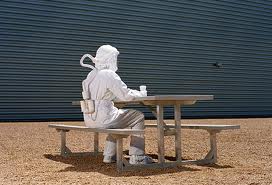 Even though this EcoNews article is about air poisons that result from fossil fuel production, it applies to just about any combustion source, including cement plants, manufacturing plants, vehicles, and so on. It's a pretty good top ten list, although you wonder why Dioxins and Furans got left off, since they're toxic by the gram instead of pound. Also missing is Particulate Matter as a stand alone threat, although it gets a shout out as a by-product. Nevertheless, these are the among the most dangerous pollutants that have caused and are still causing a lot of problems in North Texas and elsewhere:
Even though this EcoNews article is about air poisons that result from fossil fuel production, it applies to just about any combustion source, including cement plants, manufacturing plants, vehicles, and so on. It's a pretty good top ten list, although you wonder why Dioxins and Furans got left off, since they're toxic by the gram instead of pound. Also missing is Particulate Matter as a stand alone threat, although it gets a shout out as a by-product. Nevertheless, these are the among the most dangerous pollutants that have caused and are still causing a lot of problems in North Texas and elsewhere:
1. Benzene
Benzene is a well-established carcinogen with specific links to leukemia as well as breast and urinary tract cancers. Exposure to benzene reduces red and white blood cell production in bone marrow; decreases auto-immune cell function (T-cell and B-cells); and has been linked to sperm-head abnormalities and generalized chromosome aberrations.
Benzene is one of the largest-volume petrochemical solvents used in the fossil fuel industry. It is a major component in all major fossil fuel production: oil, coal and gas. People are exposed to it from inhaling automobile exhaust and gasoline fumes, industrial burning such as oil and coal combustion, and exposure to fracking fluids.
There's a recent Emory University study concluding that risk for leukemia fell with every mile between a person's home and facilities that release benzene.
2. & 3. Sulfur Dioxide (SO2) and Nitrogen Oxides (NOx)
Sulfur dioxide (SO2) and nitrogen oxides (NOx) are two primary examples of particle-forming air pollutants (particulate matter). Particulate matter is known to contribute to serious health problems, including lung cancer and other cardiopulmonary mortality. SO2 and NOx are both highly toxic to human health, and contribute directly to thousands of hospitalizations, heart attacks and deaths annually.
SO2 is particularly dangerous for children. Studies correlate SO2 emissions from petroleum refineries—even in lower exposure levels over time —to higher rates of childhood asthma in children who live or attend school in proximity to those refineries. Similarly, small particles of NOx can penetrate deeply into sensitive lung tissue and damage it, causing premature death in extreme cases. Inhalation of such particles is associated with emphysema and bronchitis.
4. Petroleum Coke (Pet Coke)
Pet coke is a by-product of oil processing that's also used as a fuel. It's a heavy dust which resembles coal. It's burned in power plants and cement plants. It contains dozens of dangerous chemicals and heavy metals, including chromium, vanadium, sulfur and selenium. It's a huge contributor to particulate mater and NOx and SOx formation
5. Formaldehyde
Formaldehyde is a carcinogen with known links to leukemia and rare nasopharyngeall cancers, according to the International Agency for Research on Cancer. Formaldehyde is highly toxic regardless of method of intake. It is a potent allergen and genotoxin. Studies have linked spontaneous abortions, congenital malformations, low birth weights, infertility and endometriosis to formaldehyde exposure. Epidemiological studies link exposure to formaldehyde to DNA alteration. It is also contributes to ground-level ozone.
Independent studies, have detected dangerous levels of formaldehyde in both wastewater and ambient air emissions from fracking operations. One researcher, with the Houston Advanced Research Center, said reading from one test site in North Texas, “astoundingly high,” and, “I’ve never heard of ambient (formaldehyde) concentrations that high… except in Brazil.”
6. Polycyclic Aromatic Hydrocarbons (PAHs)
In actuality, this is not a single listing—polycyclic aromatic hydrocarbons (PAH) is an entire class of toxic chemicals, linked together by their unique chemical structure and reactive properties.
Many PAHs are known human carcinogens and genetic mutagens. In addition, there are particular prenatal health risks: prenatal exposure to PAHs is linked to childhood asthma, low birth weight, adverse birth outcomes including heart malformations and DNA damage.
Additionally, recent studies link exposure to childhood behavior disorders; researchers from Columbia University, in a 2012 Columbia University study, found a strong link between prenatal PAH exposure and early childhood depression. Infants found to have elevated PAH levels in their umbilical cord blood were 46% more likely to eventually score highly on the anxiety/depression scale than those with low PAH levels in cord blood. The study was published in the journal Environmental Health Perspectives.
7. Mercury
Mercury is a dangerous neurotoxin emitted from coal-fired power plants and any other combustion source using coal for fuel – like the Midlothian cement plants. It damages the brain and the nervous system either through inhalation, ingestion or contact with the skin. It is particularly dangerous to pregnant women and children. It is known to disrupt the development of the in-vitro brain. In low doses, mercury may affect a child’s development, delaying walking and talking, shortening attention span, and causing learning disabilities. High dose prenatal and infant exposures to mercury can cause mental retardation, cerebral palsy, deafness and blindness. In adults, mercury poisoning can adversely affect fertility and blood pressure regulation and can cause memory loss, tremors, vision loss and numbness of the fingers and toes.
One out of every six women of childbearing age in the U.S. have blood mercury levels that could be harmful to a fetus, according to EPA reports. The EPA estimates that 300,000 children are born each year at risk for significant development disorders due to mercury exposure.
8. Silica (Silicon Dust/Sand)
Crystalline silica (“frac sand”) is a known human carcinogen; breathing silica dust can lead to silicosis, a form of lung disease with no cure. This is a hazard in the cement industry and threat to those living downwind of cement plants, and now it appears to be one for natural gas roughnecks and adjacent homeowners as well.
Silica is commonly used, in huge amounts, during fracking operations. Each stage of the process requires hundreds of thousands of pounds of silica quartz–containing sand. Millions of pounds may be used for a single well.
The presence of silica in fracking operations, simply put, is a major safety risk with a high likelihood of dangerous exposure. Case in point: researchers from the National Institutes of Occupational Safety and Health (NIOSH) recently collected air samples at 11 fracking sites in five different “fracking states” (CO, ND, PA, TX and AR) to evaluate worker exposure to silica. Every single site had measures higher than the NIOSH threshold for safe exposure—so high, in fact, that about one-third of the samples collected were even above the safe threshold for wearing a safety respirator mask. This was reported in May 2013 in the Journal of Occupational and Environmental Hygiene.
9. Radon
Radon is a colorless, odorless, tasteless radioactive gas which causes lung cancer. It is the second largest cause of lung cancer in the U.S. after cigarette smoking. About 20,000 people per year die from lung cancer attributed to radon exposure according to the National Cancer Institute. Further, there is no known threshold below which radon exposures carries no risk.
Radon exposure can come from a variety of natural sources. However, fracking (natural gas) represents a significant new and increased source of radon exposure to millions of citizens. Radon is released into local groundwater and air during fracking operations. It also travels through pipelines to the point of use—be it a power plant or a home kitchen.
The science behind radon release and exposure is complex but explained well here by Christopher Busby, the Scientific Secretary of the European Committee on Radiation Risk, who warns that radon dangers from fracking “have not been addressed properly (or at all) by the environmental impact statements published by the operators, or by the Environmental Protection Agency in the USA.”
10. Hydrofluoric Acid (HF) / Hydrogen Fluoride
Hydrofluoric acid (HF) is “one of the most dangerous acids known.” HF can immediately damage lungs, leading to chronic lung disease; contact on skin penetrates to deep tissue, including bone, where it alters cellular structure. HF can be fatal if inhaled, swallowed, or absorbed through skin.
The senior laboratory safety coordinator at the University of Tennessee said, “Hydrofluoric Acid is an acid like no other. It is so potent that contact with it may not even be noticed until long after serious damage has been done.”
Hydrofluoric Acid is a common ingredient used in oil and gas extraction.
Numerous studies, including recent ones conducted by both The Center for Public Integrity (CPI) and the United Steelworkers Union (USU) cite the oil industry’s abysmal safety record as a high risk factor for a major HF accident; over the past decade, more than 7,600 accidental chemical releases from refineries have been reported by the industry. In the past three years alone, a total of 131 “minor” accidents involved HF.

